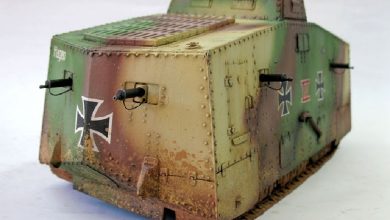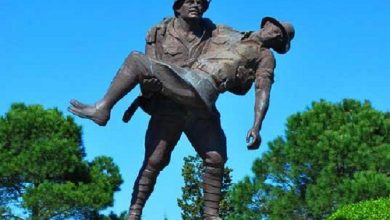What causes the Sepoy mutiny: The bloody Indian rebellion

One of the bloodiest rebellions in British history is one of the bloodiest mutinies: Sepoy mutiny. It is most often remembered as an anecdote. The Indian soldiers were outraged at being forced to take a bite of cartridges soaked in beef fat, and for such a small thing, they killed every Englishman in and around Delhi. However, both the course of the rebellion and its causes were far more complicated.
There were indeed cartridges in grease-soaked paper wrappers. The army was rearmed with new rifles, which were to be loaded with these cartridges. To load the rifle, the soldier had to bite off part of the paper wrapper of the cartridge on command-open it. The taste of grease caused unrest among the sepoys. They were all either Hindu or Muslim, and the former assured that the paper was soaked in cow fat and the latter in pig fat. In the end, it was decided that a mixture was being used. The British authorities officially declared that it was not, but the sepoys did not believe it.
The problem was that for Hindus, the cow was a sacred animal and the pig for Muslims was unclean. To offer to take the fat of these animals in the mouth would have been an affront to the religious beliefs of the sepoys. On March 29, 1857, a Sipai named Pandi (a Brahmanical surname – about the same as a nobleman’s surname to Indians) refused on principle to use ammunition. When a British officer arrived at the regiment to investigate his riot, Pandey shot him. There were more sepoys in the British troops in India than the British, they were paid less and thrown into all hot spots.
The marksmanship failed the sepoy, and he wounded only his horse. Pandey urged other soldiers to mutiny, but the fellow soldiers hesitated. The British responded by calling for Pandey’s arrest, but the sepoys continued to hesitate. Only one soldier was found who tried to take Pandey, but the proud son of the Brahman caste shot himself in the head. As is clear from the incident with the horse, however, his marksmanship was unimportant, and his suicide failed. He was arrested and later hanged. Pandi’s regiment was disbanded for disobedience.
The execution of the man from the Brahman family was the final straw. Discontent had been building up for a long time. The incident took place in Bengali, a region deliberately ravaged by the British before, and ravaged severely. The local weavers were far ahead of the British in technology and did not even compete with them – no one would buy English cloth if they could afford Indian cloth.
To stifle the competition, the British authorities imposed unbearable taxes on the Bengalis, forbade them to sell their cloth to England, and took other measures which not only bankrupted the region but also brought about a massive famine. From this terrible famine, Bengali never recovered. The British repeatedly staged a famine in Bengal until the forties of the twentieth century, when, under the pretext of a war with Japan, all rice supplies were taken out of the region.
The attitude of the British toward the natives was not important at all. The Sepoys were paid much less than the British soldiers. But against the background of the general economic situation in Bengal, it was good money.
Sepoys were thrown into all the wars of the empire, for example, they were the main cannon fodder in the Afghan War, the Burma War, and the two Punjab conflicts of the mid-nineteenth century. Some of the rebels had just returned from the distant Crimea, where they had fought with Russia. As for the cartridges, their wrappers were most likely lubricated with any grease supplied from the slaughterhouse, including pork and beef. They were made for the entire empire, and no one even thought about how Indian soldiers would feel about such impregnation.
Soon after Pandey’s execution, eighty-five sepoys in Meerut refused to fire new cartridges. They were sentenced as mutineers to death but were mercifully replaced by ten years’ hard labor. During the public stripping of their shoulder straps, the mutineers cursed the other Sepoys for betraying them. Curses worked better than proclamations. The sepoys rebelled.
The rebels freed their comrades and all who had been imprisoned and attacked the British officers. The townspeople immediately joined the riot. Immediately several Britons, including women and children, were massacred. One of the Bengal regiments, accompanied by some other sepoys, was able to get the British families out of the city, then placed them under the nawab (ruler) protection at Rampur. Had it not been for this, there would have been many more casualties. Not all sepoys joined the rebellion. Some refused to oppose him but defended the British civilians.
The rebels from Meerut went to Delhi, to Bahadur Shah. They asked him to lead the rebellion. Meanwhile, the townspeople and some of the sepoys in Delhi also revolted against the British. They attacked mostly officials, shopkeepers, priests, and Indian Christians who tried to defend the temples. Those sepoys who refused to participate in the revolt did not stop the rebels.

British officers blew up a local arsenal. The explosion killed several Indians and damaged houses around them. News of the Indians who died because of the British spread instantly, and virtually all the sepoys around Delhi rebelled. Delhi became a rebellious city. But frankly, no one knew at first what to do about it. The rebellion had no purpose. It was a pure outburst of accumulated rage.
Only one thing was clear – the British would not simply leave the rebels behind. As many Indians as possible had to be mobilized before Delhi was surrounded. So the rebels sent around… chapatti, cheap cakes that were eaten by peasant families and which were so hard that they could be stored for a very long time. In Britain, they were calm about statements in the spirit of what Charles Dickens allowed himself: “It’s a pity that I cannot become the commander-in-chief in India… I would announce to them in their own language that I consider myself appointed to this position by God’s will, and therefore, I will make every effort to destroy this people.”
In every Indian village willing to join the uprising, the local elected head ordered two chapatis to be baked. He kept one for himself as a sign. He bit another one and passed it on to the village, from which he expected alliance. The local head, in turn, also bit it – as a sign that he was “signing” an unspoken agreement and sent out his chapatis further.
This strange system allowed the rebels to quickly and very quietly recruit allies. The peasants joined the rebellion in large numbers. Many believe that this is what made it so bloody. There are known cases when the sepoys themselves refused to participate in the murders of British women and children. Then the armed peasants came forward.
During the siege of Kanpur, the sepoys also refused to kill the hostages and their young children. Then the leaders sent for the butchers. The soldiers could not look at the results of their work without shuddering. The next morning, several people were sent to remove the corpses, and they found that three women and three children had survived. The living were picked up together with the dead and thrown into the well. The rebels repeatedly killed the British (including women and children), promising first that they would be allowed to pass through.
Lakshmi Bai
One of the leaders of the rebellion was the widow of an Indian prince, Lakshmi Bai. The British authorities reinstated her against themselves by declaring that her husband’s principality, upon his death, belonged to the British crown. This even though the deceased managed to bequeath everything to his five-year-old nephew. Lakshmi, according to the will, was to become regent to the child.
The Duchess had long and unsuccessfully tried to reclaim the principality through legal means, pounding the doorsteps of officials, but nothing came of it. The seized once Britain was no longer out of her hands.
When the principality joined the rebellion, sixty Britons – including women and children – locked themselves up in one of the forts. They asked for Lakshmi’s help and protection, but she had neither her own troops nor authority among the sepoys. In the end, the rebels suggested that the British surrender and leave the fort, promising that no one would touch them. As soon as the British came out of the gate, they were killed.
Perhaps it was this brutal murder that led Lakshmi Bai to appeal to the British authorities after the rebellious sepoys left. She again assured them of her loyalty and asked that the principality be returned to her so that she could restore order. The British openly declared that they considered her an accomplice of the rebels and, as they called it, sent her away. It was probably the most ridiculous thing they could have done. Without their rudeness, Lakshmi Bai would not have become one of the rebel leaders.
This is where we must dwell on her personality. The fact is that Lakshmi-Bai was raised as a child in much the same way as the legendary Razia-Sultan. She knew how to fight with two sabers and ride as a child. Her husband took her quirks favorably, and Lakshmi Bai, becoming a princess, taught the art of war and her servants – a real troop of Amazons.

Lakshmi Bai not only supported the rebels, she participated in battles personally. She not only fought but, knowing the strategy, gave effective orders. Her presence in the ranks of the rebels inspired them as if Razia herself had come to life. Lakshmi died in one of the battles. Lakshmi is also credited with brutally killing British civilians. But the Indians believe she was slandered by the British.
Defeat
The rebels might have succeeded in throwing off British power, if not all, then a large part of India, had it not been for Bahadur Shah’s ambitions. He declared himself ruler of the Indian lands. This displeased the Sikhs and Punjabis very much, and they sided with the British authorities. Bahadur Shah was a Muslim and a descendant of the Mughal dynasty, with whom the Sikhs and Punjabis had a long-standing feud.
In lands where the British crown succeeded in regaining power, a backward massacre began. The British soldiers were allowed to do anything. They looted, raped, beat the townspeople, and even killed those who resisted. After the mutiny, many Indians were hanged on the mere suspicion that they might have been helping the rebels.
After the suppression of the rebellion, a huge number of Indians were executed by hanging. The entire Bengal region was on gallows. The slightest suspicion on the part of the authorities that you had in any way helped the rebels was enough to get on it.
Insurgent leaders were executed in a way that made it impossible to bury them normally, that is, as offensive and as frightening at the same time as possible. They were tied to cannons. When the cannons fired, the cannonballs and gunpowder gases tore the executed men to pieces.
The brutality of the response shocked Europe no less than the horrors of the rebellion itself. Many sympathized with the rebels. Ten years after the suppression of the rebellion, a book was published in France, the main character of which is one of the leaders of the rebels, Prince Dakkar. True, he acts mostly under the pseudonym “Captain Nemo”. Jules Verne describes his hero’s misadventures in his homeland very sympathetically.




